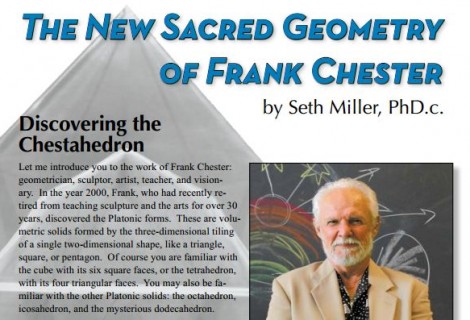An Esoteric Guide to Spencer Brown’s Laws of Form #6
« Previous Page | 1 2 3 4 5 6 | View All | Next Page »
LoF p. 95
- In discovering a proof, we must do something more subtle than search. We must come to see the relevance, in respect of whatever statement it is we wish to justify, of some fact in full view, and of which, therefore, we are already constantly aware. Whereas we may know how to undertake a search for something we can not see, the subtlety of the technique of trying to ‘find’ something which we already can see may more easily escape our efforts.
The esoteric path relies upon that which is there for us already; what it does is to make what we already see transform through the revelation of a higher context IN it. We then see more than we see, and this is the esoteric analogy for mathematical “proof”. GSB continues:
LoF p. 95
- This might be a helpful moment to introduce a distinction between following a course of argument and understanding it. I take understanding to be the experience of what is understood in a wider context. In t his sense, we do not fully understand a theorem until we are able to contain it in a more general theorem. We can nevertheless follow its proof, in the sense of coming to see its evidence, without understanding it in the wider sense in which it may rest.
In other words, the esoteric path of development OCCURS from the ‘bottom up’ (or the inside out) but is LED from the top down (or the outside in). Wider and wider contexts are revealed for what was previously already known, changing what is known in the transformation of the knower to the state in which that higher context becomes revealed.
LoF p. 96
- Following may thus be associated particularly with doctrine, and doctrine demands an adherence to a particular way of saying or doing something. Understanding has to do with the fact that what ever is said or done can always be said or done a different way, and yet all ways remain the same.
This is a very important esoteric point, and is the key to the dissolution of fundamentalism of any type. Steiner uses the metaphor that while there is but one mountain, there are many paths to the top. Or more explicitly helpfully, he says:
“One must postulate the following: no single matter is to be comprehended only by means of what is said about the matter itself, but by means of much else that is disclosed concerning totally different matters. This will develop the conception that what is vital is to be found not in any single truth but in the harmony of all truths. This must seriously be considered by anyone intending to carry out the exercises.” (Rudolf Steiner, How to Know Higher Worlds, preface to the third edition, my italics).
The exercises are simply those designed to awaken the esoteric capacities latent in all of us. This, coupled with the very clear recognition that “There is, in truth, no difference between esoteric knowledge and all the rest of man’s knowledge and proficiency. This esoteric knowledge is no more of a secret for the average human being than writing is a secret for those who have never learned it.” (How to Know Higher Worlds, chapter 1).
Of course, this is exactly the point that I am trying to make in exploring GSB’s Laws of Form. I am simply taking LoF as the starting point, which could have been anywhere, for esoteric continuation. This whole essay is an attempt to bring a vertical movement of knowing to the text LoF as a “thing” at level N; an attempt to move towards N+1. My hope is that by doing this here (now it is all just back at N for you, the reader) in a very explicit way, you can take up this same type of transformation.





